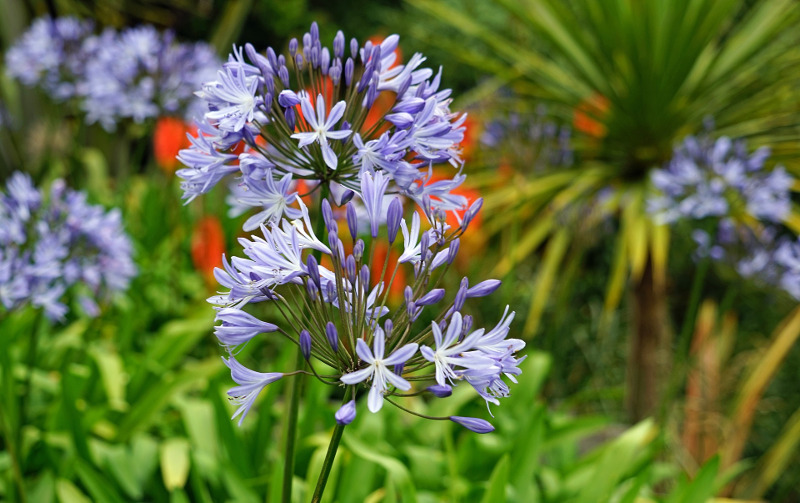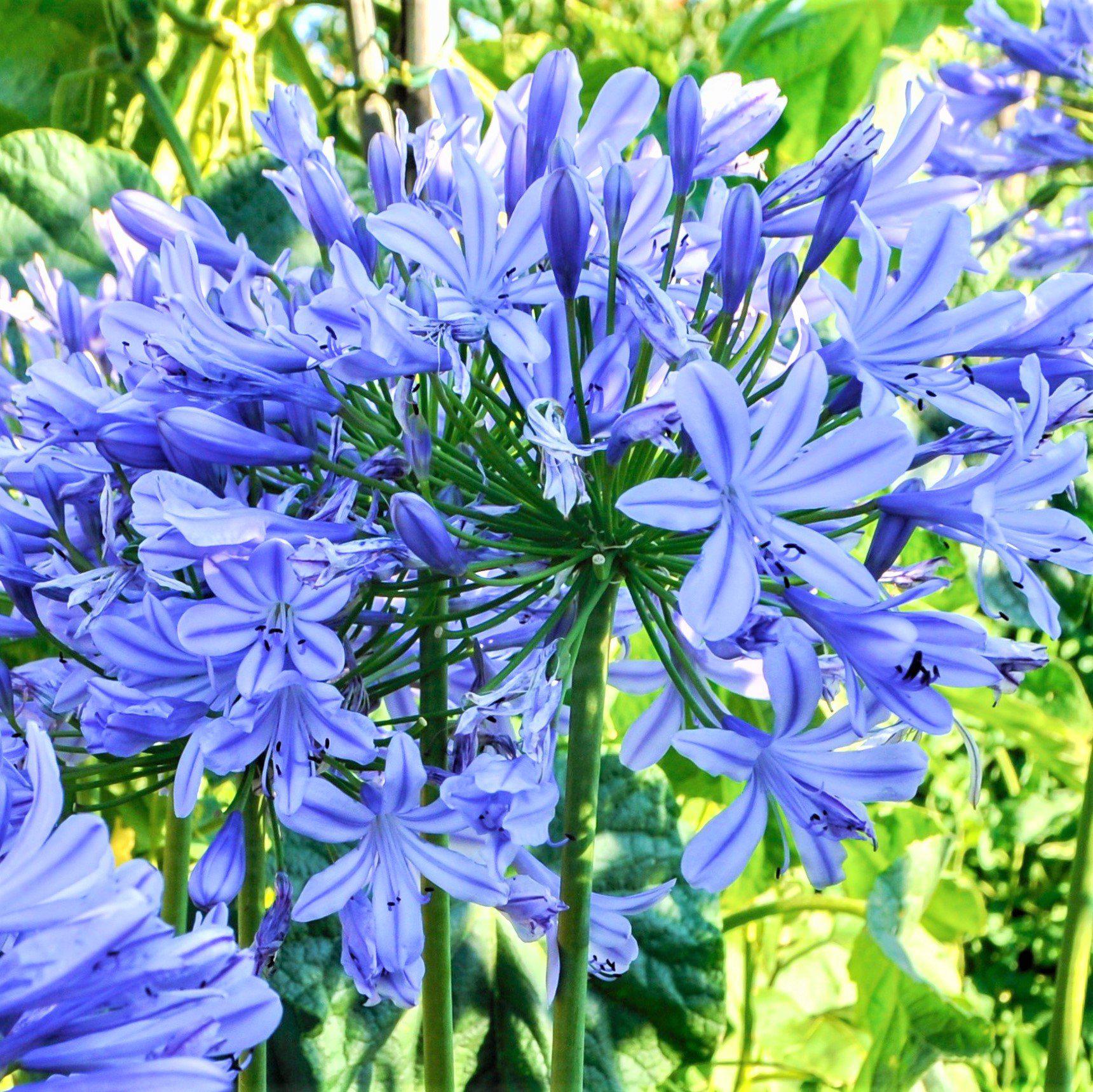Agapanthus Companion Plants: Perfect Pairings for Your Yard
Agapanthus Companion Plants: Perfect Pairings for Your Yard
Blog Article
Unleashing the Secret to Successful Agapanthus Cultivation: Idea for a Flourishing Yard
In the world of horticulture, cultivating agapanthus successfully calls for a calculated technique that incorporates various aspects of plant care. By understanding the subtleties of agapanthus growing, one can develop an environment where these plants grow and flower abundantly.
Growing Agapanthus: Finest Practices
When growing Agapanthus, appropriate soil prep work is necessary for ensuring successful development and advancement of these stunning blossoms. Agapanthus, generally known as Lily of the Nile or African lily, grows in well-draining dirt with a somewhat acidic to neutral pH degree - Agapanthus. Prior to planting, it is crucial to amend heavy clay soils with raw material such as garden compost or peat moss to enhance drain and offer important nutrients for the plants
To grow Agapanthus, select a place that gets complete sunshine to partial shade, as this will promote healthy and balanced development and plentiful blooming. Dig an opening twice the diameter of the plant's root round and position the Agapanthus at the exact same depth it was previously growing. Carefully backfill the opening with dirt, weighing down firmly to remove any kind of air pockets around the origins.
Water the recently planted Agapanthus completely and proceed to maintain the soil uniformly moist, specifically during the plant's active growing period. Agapanthus. Using a well balanced fertilizer once a month can further sustain the plant's growth and blooming. By following these finest methods for growing Agapanthus, you can develop a sensational display of these captivating flowers in your garden
Perfect Dirt Conditions for Agapanthus
For optimal development and flowering success of Agapanthus plants, guaranteeing the dirt conditions are suitable is critical. Agapanthus likes dirt that is abundant in nutrients, so incorporating a well balanced fertilizer throughout the growing period can promote healthy growth and vivid flowers.

Watering and Feeding Tips
To guarantee healthy growth and vibrant blossoms, proper watering and fertilizing techniques are essential for successful Agapanthus cultivation. Agapanthus plants profit from routine watering, particularly during the growing season.
When it pertains to fertilizing Agapanthus, a balanced fertilizer with equivalent parts nitrogen, phosphorus, and potassium can be applied in the spring to advertise healthy development and blooming. Slow-release fertilizers are optimal for supplying nutrients slowly over a prolonged period. Prevent over-fertilizing, as this can result in excessive foliage growth at the expense of blossoms.
Additionally, incorporating raw material like compost into the soil can boost nutrient levels and improve Get More Info soil structure, aiding in the general wellness of the Agapanthus plants. By adhering to these watering and fertilizing suggestions, garden enthusiasts can ensure their Agapanthus plants flourish and generate magnificent screens of blossoms.
Trimming and Deadheading Methods
Appropriate pruning and deadheading strategies play an essential duty in maintaining the wellness and appearances of Agapanthus plants, discover here complementing the vital techniques of watering and feeding for effective farming. Pruning Agapanthus involves eliminating spent blossom heads, dead or yellowing fallen leaves, and overall shaping of the plant to advertise far better growth. Deadheading, the process of removing faded blossoms, not just enhances the plant's look but likewise encourages additional blooming.
When deadheading Agapanthus, it is advisable to trim off the blossom stem at the base making use of sharp, tidy shears. This process redirects the plant's power from seed production back right into origin and foliage growth, promoting a healthier and extra robust plant. Normal deadheading can expand the flowering duration of Agapanthus and prevent self-seeding, which can lead to overcrowding.
In regards to pruning, Agapanthus typically advantages from a light trim after flowering to clean the plant and urge fresh development. Reducing the spent flower stems and getting rid of any type of dead or broken foliage helps preserve the plant's vitality and general appearance. However, it is necessary to stay clear of cutting right into the crown of the plant, as this can deteriorate its health and wellness.

Protecting Agapanthus From Pests and Diseases
Implementing effective bug and illness management methods is vital to securing the wellness and vitality of Agapanthus plants in farming. One common parasite that influences Agapanthus is the Agapanthus borer, a caterpillar that tunnels into the plant, causing damage to the leaves and blossoms.
In enhancement to parasites, Agapanthus are prone to illness such as root rot and fungal fallen leave places. These problems can often be prevented by guaranteeing proper water drainage and avoiding overwatering. If indicators of Visit Website disease appear, affected components of the plant should be immediately gotten rid of to avoid more spread. Fungicides may also be utilized as a therapy measure, following the manufacturer's instructions carefully. By staying vigilant and dealing with parasite and illness issues immediately, garden enthusiasts can help their Agapanthus flourish and grow.

Verdict
Finally, successful cultivation of agapanthus requires proper growing methods, perfect soil problems, adequate watering and feeding, regular pruning and deadheading, and protection from bugs and illness. By adhering to these techniques and tips, gardeners can make sure a flourishing garden full of stunning agapanthus blooms. Agapanthus. Keep in mind to maintain constant treatment and attention to information to promote the wellness and longevity of these stunning plants
When planting Agapanthus, correct dirt preparation is necessary for ensuring effective growth and advancement of these beautiful blossoms.Water the freshly planted Agapanthus thoroughly and proceed to maintain the soil evenly damp, particularly during the plant's active expanding season.For optimum growth and flowering success of Agapanthus plants, ensuring the soil conditions are suitable is important. When transplanting or growing Agapanthus, guarantee the dirt is well-prepared to provide the needed foundation for the plants to establish themselves efficiently. One common pest that influences Agapanthus is the Agapanthus borer, a caterpillar that passages into the plant, triggering damage to the fallen leaves and blossoms.
Report this page